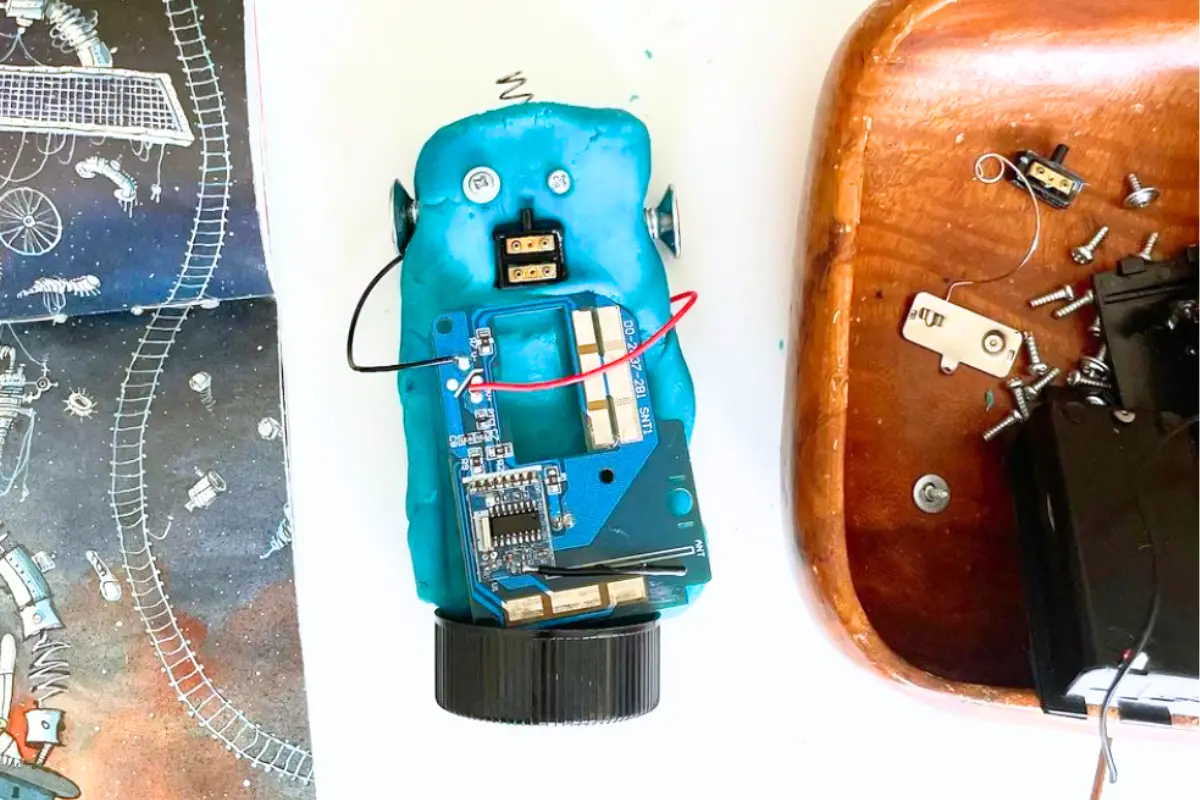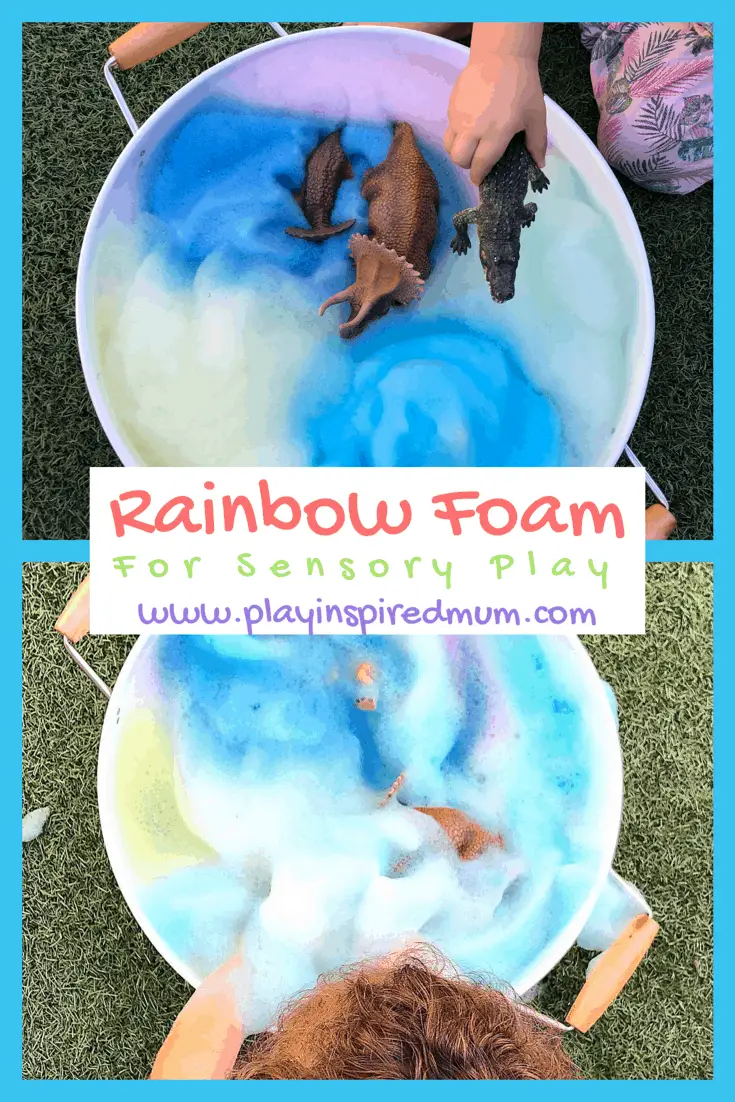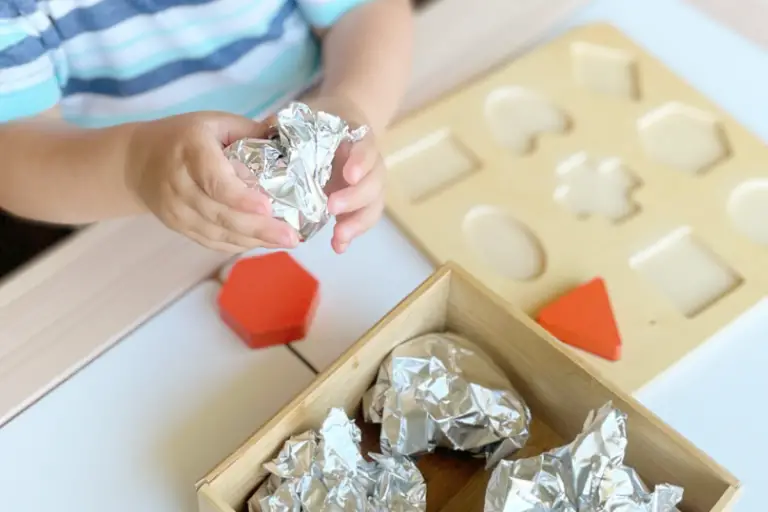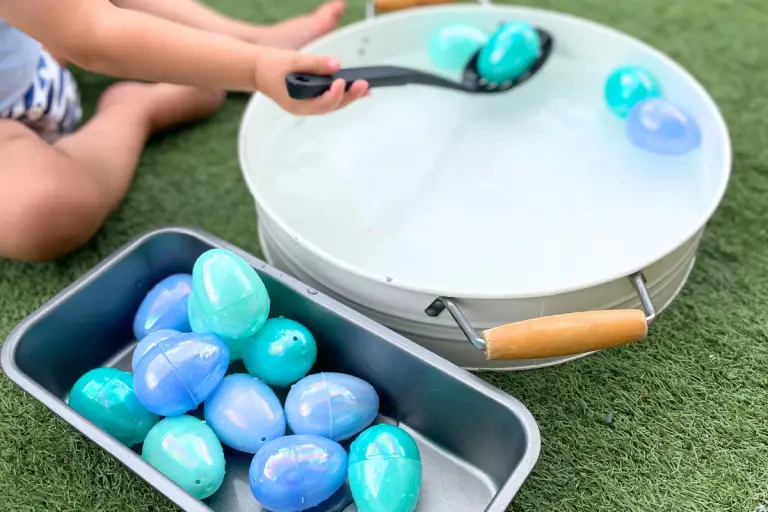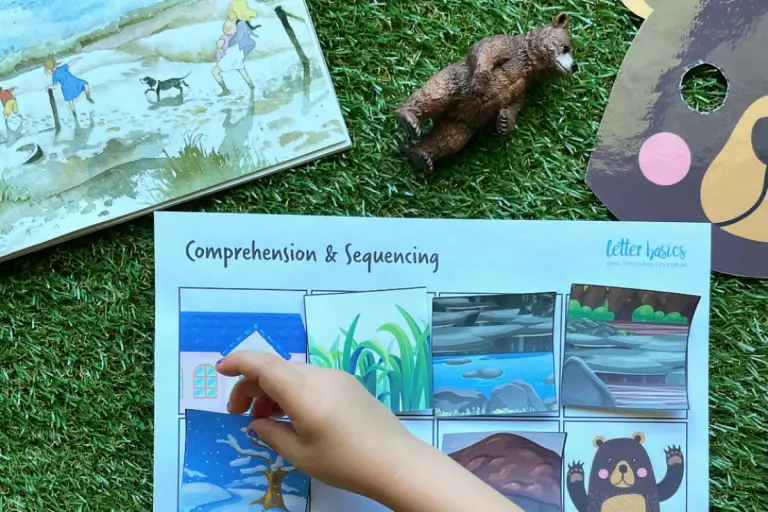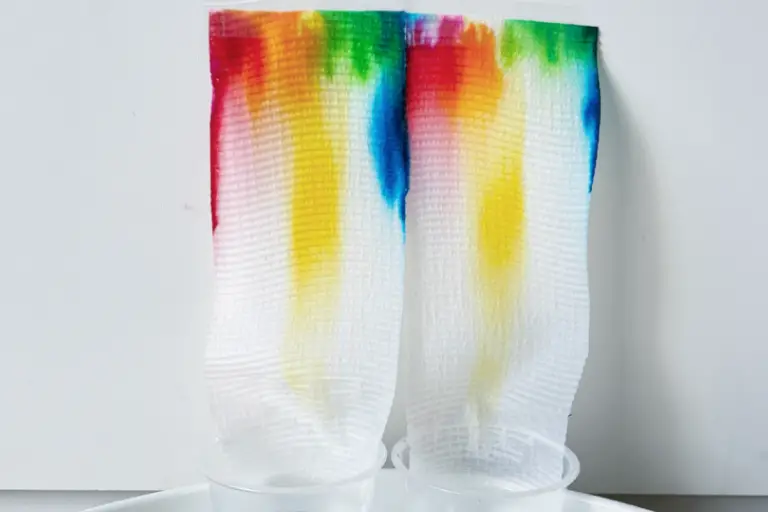Eco-friendly Fun: Making Play Dough Robots with Recycled Parts
Disclosure: This blog contains affiliate links which I may earn a small commission from if you purchase through them, at no extra cost to you.
Be inspired to make play dough robots using recycled electronic parts from old controllers in this fun fine motor activity for toddlers and preschoolers.
There is something fascinating about discovering the circuits, wires and springs inside old electronics.
Using grown up tools such as a screwdriver (with proper adult supervision) adds an extra element of responsibility which feeds self confidence and adds extra excitement to the process.
Play dough robots are exciting to make, encourage fine motor skills development and creativity.
Not bad for a lump of play dough and some old electronics.
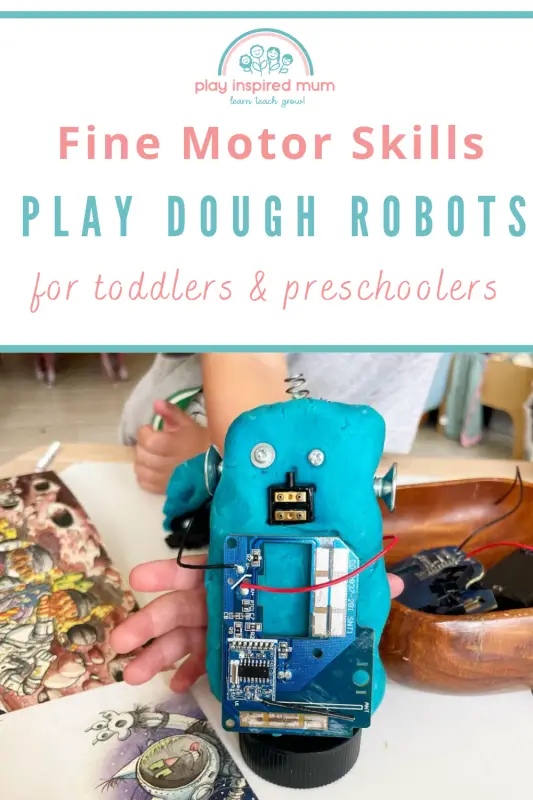
Play Dough Robots
Inspired by one of Mr 3s favourite books, I embarked on an exciting journey with my little engineer.
‘Winnie and Wilbur’ inspired us to venture into the world of playdough robots created from recycled electronic parts.
As Winnie was able to fashion a new rocket ship from scrap metal to return to Earth after space rabbits ate her first rocket, we were inspired to get creative with scraps too.
This wonderful project not only tickled our creative fancies but also offered us a unique pathway to enhance his fine motor skills significantly.
This hands-on approach to learning and play served perfectly as a STEAM activity for those little curious minds at home.
Engaging in play dough activities, we set the stage for not just problem-solving and creative play but also introduced a robust foundation for STEAM learning.
It’s fascinating to see how such simple play dough ideas, mixed with components from old remote controllers can foster real educational value.
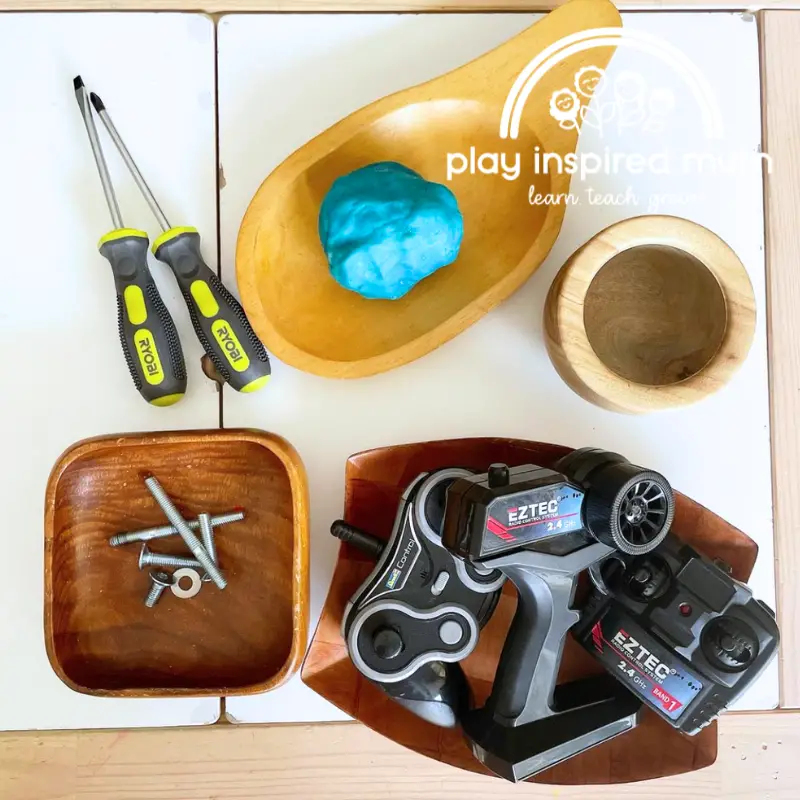
Why Choose Recycled Materials?
We always focus on using recycled elements in our fun projects at home.
Imagine turning old tech junk into something as cool as playdough robots.
Every discarded wire or broken gadget became a treasure trove.
Common items like old phones, keyboards, and remote controls are gold mines for LEDs, buttons, and wires.
Its a lesson in creativity, showing us how play dough activities, alongside problem-solving, could parent eco-conscious minds in our toddlers.
For those preschooler and toddlers alike, mixing fine motor skills with a dash of environmental care, this was perfect.
The beauty lay not just in creating something from the forgotten but in embedding the seeds of responsible living early on.
Gathering Your Materials
truth be told I was excited as to how much fun it could be to dive into creating play dough robots with my little ones at home.
Collecting our materials turned into an adventure all its own.
We knew we needed some key components:
- Play dough: This could be either homemade or snagged from the store. The important thing was having enough to let our creativity run wild.
- Recycled electronic parts: We rummaged through old electronics to find LEDs, wires, and anything else that looked interesting.
- Tools: Safety first! Our trusty screwdriver was essential, but we made sure an adult was always there to supervise.
- Parts Bowl: We kept all the small pieces together in a bowl to keep them all accounted for.
Bringing everything together, we were set to play, learn, and have some robot fun.
The emphasis on reusing and repurposing gave us a great lesson in sustainability, too.
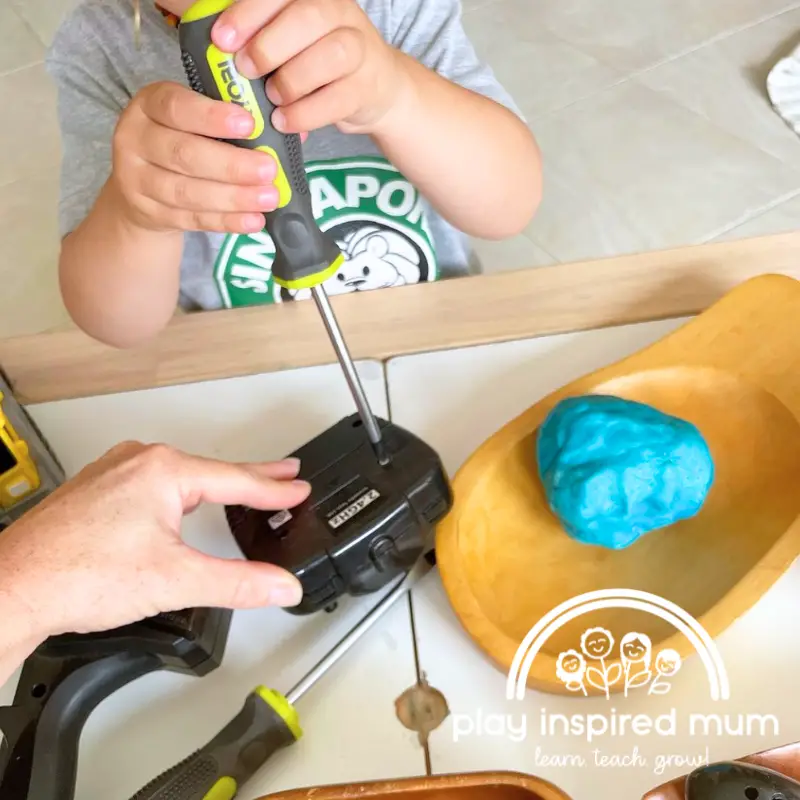
Incorporating Electronic Parts
I’ll tell you, taking apart the controllers might have just been the highlight of this activity.
The first thing we did was remove the batteries.
Armed with his screwdriver, Mr 3 was completely engaged lining up the Phillips end of the screwdriver into the screw to unscrew the casing of the controller.
As the top and bottom pieces were pried apart, the only thing more curious than his eyes were his fingers.
So many amazing questions, asking what the parts were called, what they did and how to get them out.
Some parts lifted out effortlessly while others needed the help of our screwdriver.
We removed circuits, toggles, bolts, springs wires, spacer rings and so much more.
Once the recycled electronic parts were dissembled it was time to turn to our play dough.
Creating Your Play Dough Base
Starting with the play dough base sets the stage for our eco-friendly robot fun.
It’s about grabbing that soft homemade play dough and letting imagination take the lead.
You’ll want to knead the dough, feeling it soften in your hands.
This process, believe it or not, is crucial for enhancing those fine motor skills.
Every squeeze of the dough is a workout for small muscle groups in your Childs hands.
Overtime, these seemingly mere movements collectively amount to provide strength for tasks such as fastening buttons, handwriting and tying a shoe.
Next, roll out or mold the play dough into various shapes – think cubes for bodies, spheres for heads, and snakes for limbs.
This isn’t just play; it’s an exercise in creativity.
Each shape represents parts of our robot, and deciding on them pushes us to think outside the box.
As toddlers and preschoolers manipulate the dough, they’re not just playing.
They’re engineers in the making, solving problems like how to make their playdough ideas come to life.
Every roll, pinch, and bend is a step toward building something marvelous from the ground up.
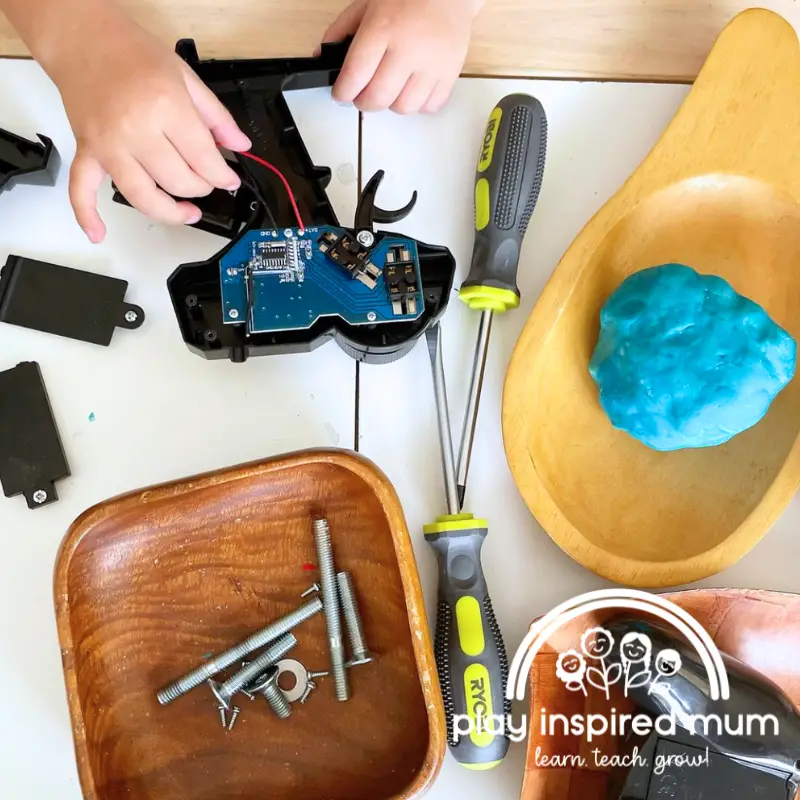
Adding electronic parts
Adding our newly discovered electronic parts into play dough to craft our little robot friends can be a joy.
The magic starts when these tiny circuits complete, breathing life into our creations.
Making sure everything’s safe, especially with batteries and LEDs, is something I’m keen on.
Always have an adult around to supervise, because while adventure is the heart of creation, safety is its backbone.
This blend of play dough activities and robot fun transforms into an engaging STEAM activity for our eager toddlers and preschoolers.
It’s not just about the fun; it’s a dance of problem-solving and fine motor skills development, all wrapped up in creative play.
So let’s dive in, ensuring every step is as safe as it is thrilling.
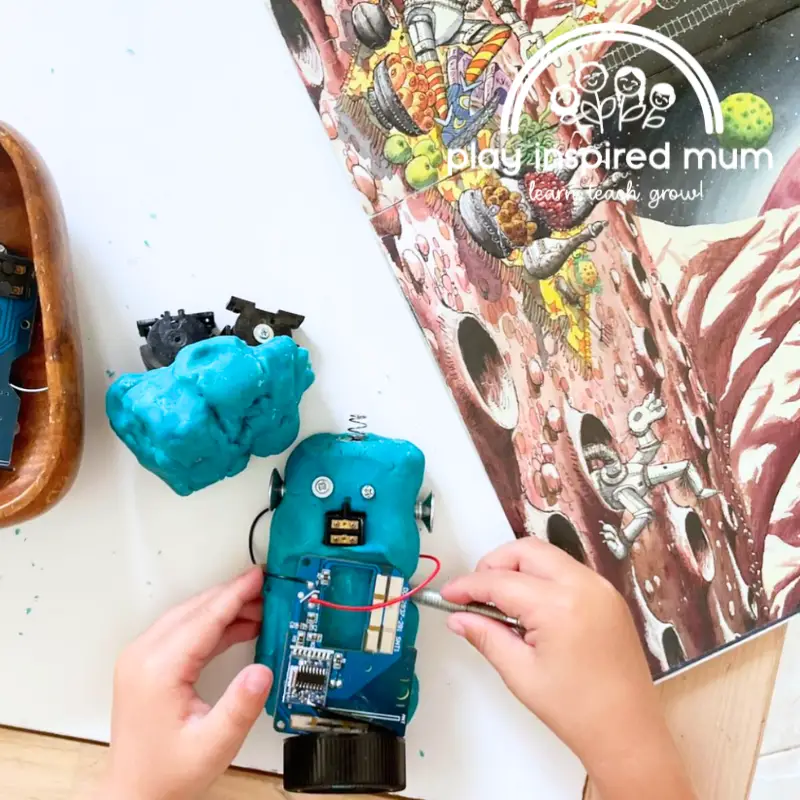
Design Ideas and Inspiration
I found the joy of mixing play dough activities with fine motor skills enhancement while exploring robot fun.
For toddlers, creating simple playdough critters offers a steam activity that is both educational and engaging.
We discovered that by incorporating basic shapes, preschoolers could concoit their versions of robotic friends.
Yet, it didn’t stop there for us.
Envisioning slightly more complex designs, like a robot with movable arms made from twisted wires or LED eyes that light up, became a fascinating challenge.
This step not only taught us the basics of circuits but also sparked endless ideas for creative play.
Problem solving turned into an exciting game, especially when fuelled by our imaginations.
- Play at home became an adventure into the unknown as we experimented with different materials to see what we could create.
- Preschooler activity sessions were filled with laughter and excitement as we brought our playdough robots to ‘life’.
- Fine motor skills were visibly improving in front of my eyes as we pinched, rolled, and sculpted our imaginative friends.
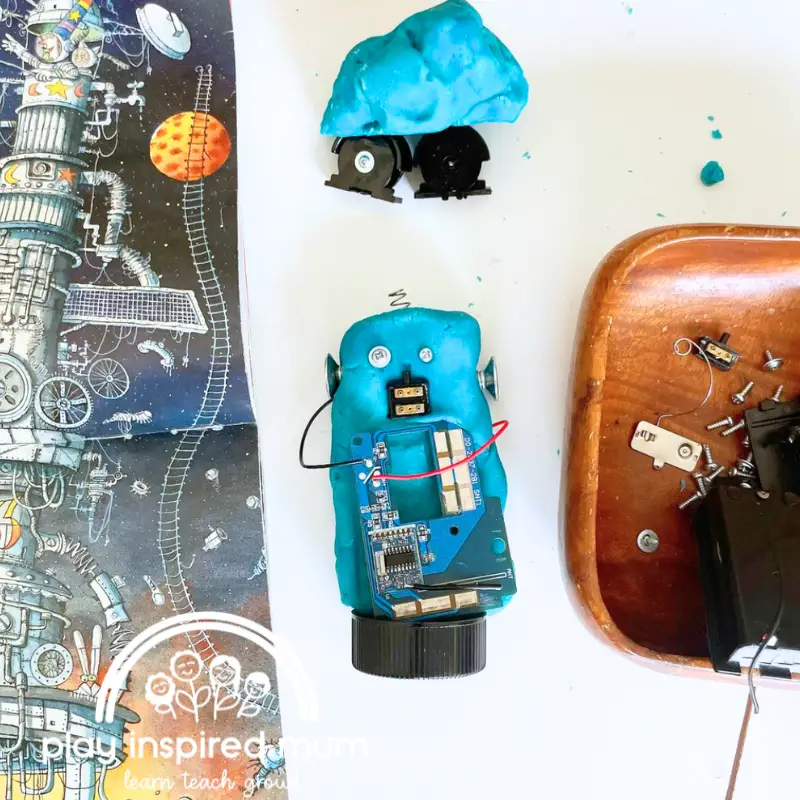
Play Dough Robots Educational Benefits
- Developing fine motor skills: Crafting playdough robots encourages toddlers and preschoolers to hone their fine motor skills. Kneading, rolling, and shaping the playdough prepare their little hands for writing and other detailed activities.
- Enhancing problem-solving abilities: As they figure out how to embed recycled electronic parts into their creations, kids tackle problems creatively. This sets the stage for critical thinking they will use throughout life.
- Fostering an interest in STEAM subjects: Merging science, technology, engineering, art, and math, these fun, hands-on projects ignite curiosity in young minds. They start to see the fascinating connections between different fields.
- Joy of creative play: There’s nothing like the pride and happiness that comes from creating something unique. This joy fuels their desire to explore and learn more.
Family Project Time: Join in the Fun!
I have seen firsthand how gathering around the table, laying out mounds of playdough, and diving into a box of salvaged electronic bits can transform an ordinary afternoon into an extraordinary adventure in creativity for my family.
It wasn’t just about making playdough robots; it was about us coming together, laughing over quirky designs, and marveling at what our combined efforts could achieve.
This activity proved to be a fantastic way for us to bond, reinforcing the idea that teamwork can lead to incredible creations.
Incorporating recycled materials into our play brought an added layer of purpose to our fun. We talked about sustainability and the importance of repurposing and recycling, turning these concepts into a tangible reality that even the youngest of us could grasp.
This approach not only entertained us but also instilled valuable lessons about environmental responsibility.
For families looking to dive into this activity, start with setting a cheerful, judgement-free zone where creativity has no bounds.
- Emphasize the joy of experimentation: Not every robot has to look perfect. It’s all about the exploration.
- Share stories and ideas: Encourage each other by sharing what inspired your designs.
- Rotate roles: Let everyone try a hand at different tasks, from molding playdough to attaching electronic components.
These tips have made our play dough robots making sessions not just fun but cherished family memories we’ll look back on for years to come.
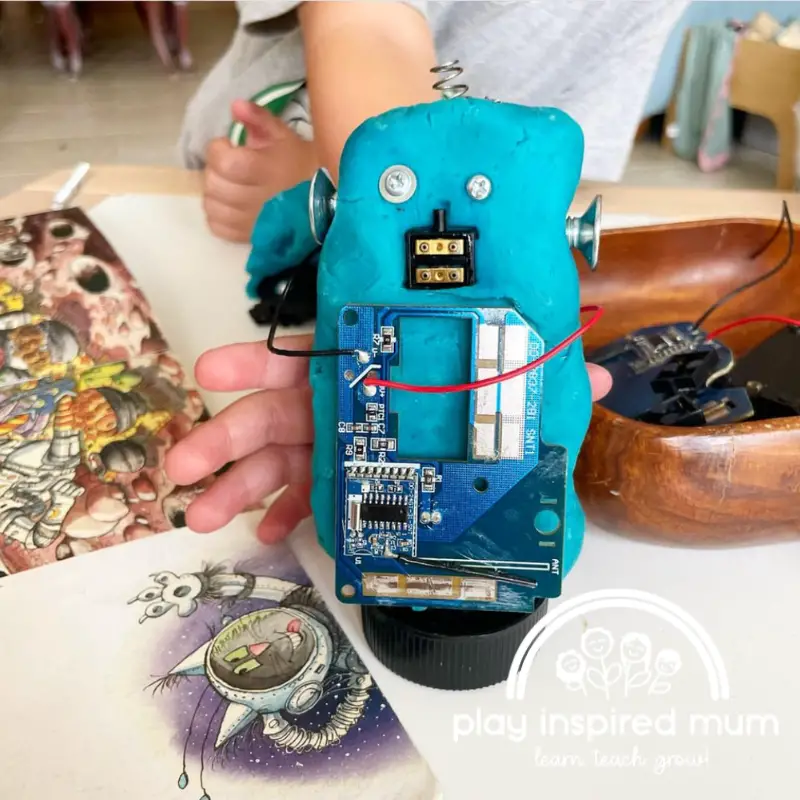
Wrapping Up Our Play Dough Robots Adventure
Our journey through crafting play dough robots has taught us more than just how to mix play dough and recycled parts.
It showcased the powerful blend of environmental awareness, creativity, and hands-on learning.
These playful projects turn everyday items into interactive, eco-friendly fun.
With each LED eyes that lit up, we not only brought our robots to life but also ignited a spark of curiosity in the realms of STEAM.
In these activities, toddlers and preschoolers honed their fine motor skills, weaving problem-solving and creative play into their fabric of learning.
For them, what began as simple play dough ideas blossomed into an enthusiasm for robot fun and a deeper understanding of sustainability.
This method of learning, rooted in doing and exploring, prepares them for a lifetime of questioning, understanding, and innovating.
I urge parents and educators not to view this as the end but as a fantastic beginning.
Let’s continue to find ways to incorporate playdough activities, recycled materials, and steam activities into everyday play at home or in the classroom.
Together, we can nurture our future problem solvers, creatives, and environmental champions.

